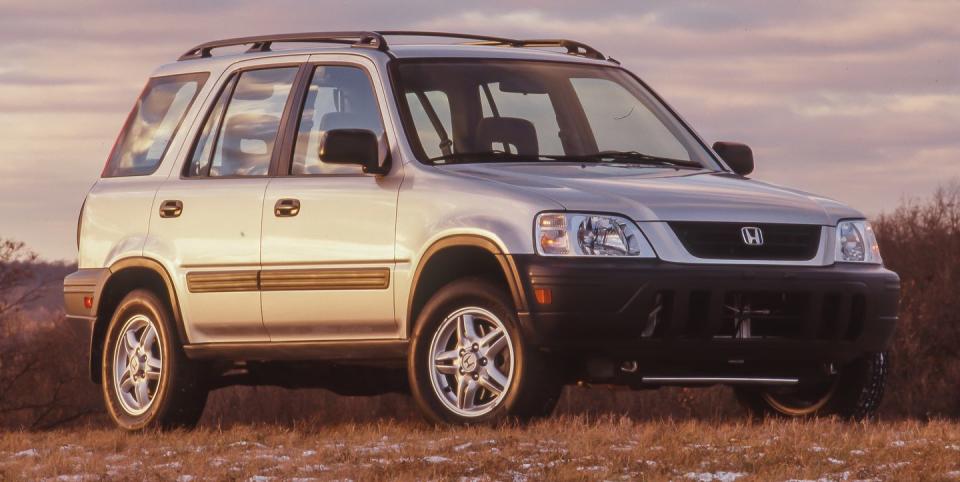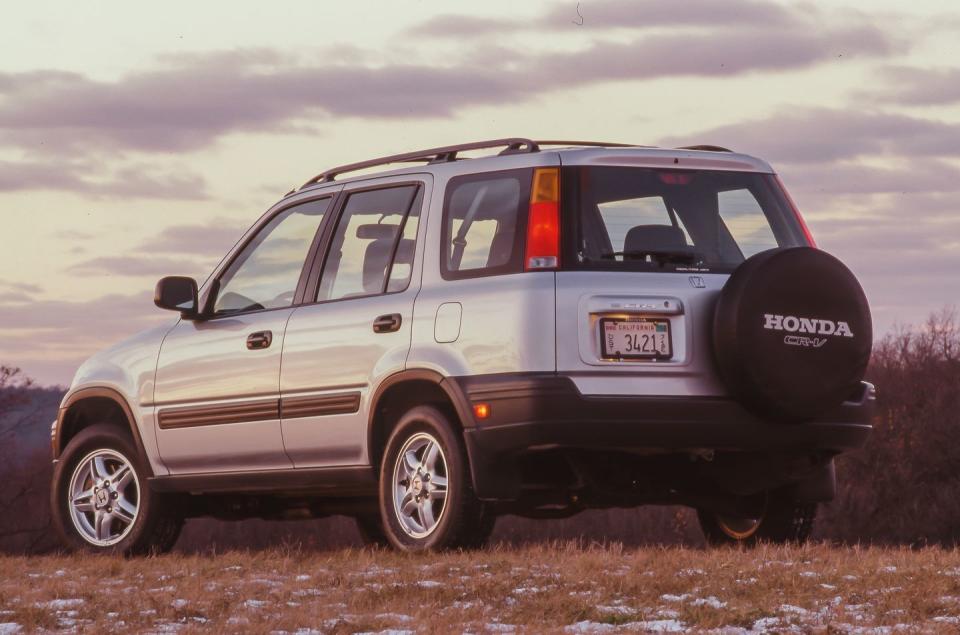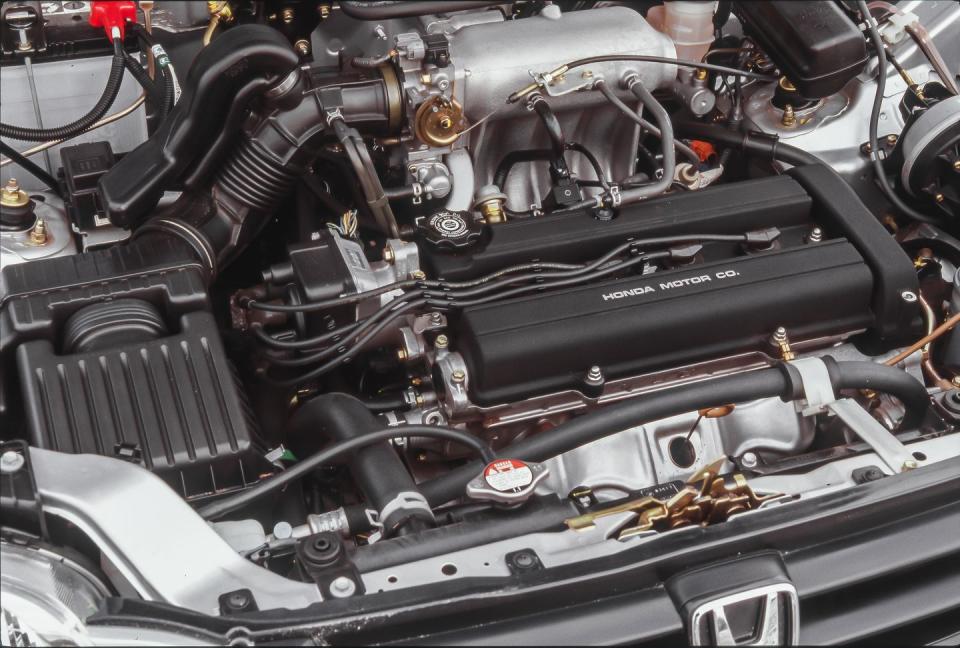Tested: 1997 CR-V Launches Honda's SUV Game

From the April 1997 issue of Car and Driver.
With the mini-sport-ute phenom in full flower, perhaps you've noticed that the ruling school of design seems obsessed with creating a kind of rolling athletic shoe, the sort of garish sneakers that give your feet the appearance of being stuck in an acid flashback. In this age of celebrity worship, if the big sport-utility vehicles aspire to an outdoorsy Eddie Bauer image, the minis seem to get right in your face and shout, "Neon Deion!" To appear suitably attired behind the wheel of a mini sport-ute, you might wish to consider an earring, possibly a do-rag atop your do.
Arriving five years late to this youthful bash, Honda's first built-in-house SUV, the compact CR-V, turns up like a Presbyterian who has wandered unwittingly into a cocktail party of cross-dressers. It looks a little square without the purple splash graphics on its flanks. But Honda is confident, unalarmed.

Previously, this company that has thrived on shrewdness, innovation, and count-on-it quality had put all its eggs in the passenger-car basket. The company declined to act in the midst of the growing craze for sport-utility vehicles. It's been selling Isuzus as Honda Passports. Very nice, too, but not real Hondas.
The blinders have just come off. Get this: In January 1996 in Japan, just three months after its SUV was introduced there, the CR-V and Honda's Odyssey minivan accounted for 60 percent of all of Honda's home sales.
Say goodnight, Deion. The CR-V (for "comfortable runabout vehicle") is aimed squarely at Honda's prime audience—the sensible crowd, folks concerned with reliability, not flash; with practicality, not pearlescent paint. In short, Presbyterians. People who want their money's worth, and with a base price of $19,695 for a well-equipped CR-V, it's a done deal.
Just one model is offered, and it comes just one way: with four doors and a four-speed automatic transmission with the shifter mounted on the steering column. The only option package adds antilock brakes and alloy wheels for $1000 (our test car had that package). No sunroof, no leather. You do get dual airbags, A/C, an AM/FM/cassette system, and power windows, door locks, and mirrors. Plus cruise control, a tilting steering wheel, and an uncomplicated system that flips the back seats flat to the floor. The spare tire is mounted on a neat two-way tailgate: The driver pushes a dash button and the glass hatch pops up; below that is a hinged door that opens out from the left corner. The taillights are mounted high on the rear D-pillars.

Honda's foremost goal was to make a SUV that rides and drives like a car, period. So the CR-V was built on a car platform—the Civic's—using a unit body, a four-wheel independent suspension, and a particularly long wheelbase of 103.2 inches (the four-door Toyota RAV4's is 94.9 inches). It also had to be inexpensive to run. The CR-V's EPA fuel-economy numbers are 22/25 mpg on the city/highway cycle, although we somehow averaged 18 mpg during our two-week test. And it could not be a gutless, howling banshee to drive as are some four-bangers. Indeed, its 126-hp 2.0-liter inline-four pulled our 3178-pound test car with zest and a notable absence of engine howl.
The CR-V is conservative, indeed. The edges of the box have been smoothed, there's a vast amount of greenhouse glass, and hard, gray plastic covers the bumpers and wheel wells to keep them chip-free while also providing a modestly sporty look. A practical fat strip of anti-doordinger plastic runs down the flank . Calm, cool, no earring. But open the door, and you slip in as easily as getting into, well, a sedan—there's no upward climb to the seat. It's interesting to note that the CR-V's ground clearance—8.1 inches—bests all compact SUVs' and is higher than that of a Ford Explorer or a Chevy Tahoe. Still, the driver's poop-deck view is lower than the big utes' but head and shoulders above a car's.

Inside, it's all Honda Presbyterian: a business-suit-gray interior with swaths of dimpled black vinyl on the doors and steering wheel. There's a vast view out, heater and radio controls that are models of intuitive simplicity, and those peerless, woolly feeling Honda seats that seem never to need more than a simple two-way adjustment. Like a Presbyterian's, the Honda's interior message is: "Let's go to work!"
The floors are flat, as a minivan's, should passengers wish to move fore and aft without exiting the vehicle. With 46 cubic feet of stretch-out room in the back seat, the CR-V is slightly more spacious than a Jeep Grand Cherokee. The cargo area is also similar in size and shape to the Jeep's but without a spare tire in the way. The CR-V is actually about the same size as a Grand Cherokee, but its Japanese economy-car roots will cause it to be crossshopped against smaller SUVs.

 Yahoo Autos
Yahoo Autos 